


Please join SCS Engineers in welcoming Dr. Aicha Slassi Senou to our Greenhouse Gas (GHG) and Climate Change Practice.
Dr. Slassi Senou brings over 10 years of expertise as a GHG and sustainability expert in GHG accounting, decarbonization planning, and life cycle assessments. She has successfully delivered over 30 third-party verified Corporate GHG Inventories for scopes 1, 2, and 3 by responding to auditors’ technical questions about data collection, calculations, in alignment with the World Resources Institute’s GHG Protocol’s Corporate Standards, and ISO 14064-1. She is skilled in managing corporate climate and GHG projects, including GHG inventories and climate disclosures, including reporting to the Science Based Targets Initiative and CDP.
Her experience includes end-to-end GHG inventory development for corporate clients from various sectors, including services and manufacturing. Over the last two years, she has experience ensuring compliance with GHG Protocol standards across Scopes 1, 2, and 3 for 45 corporate inventories. She has demonstrated deep technical expertise across all 15 Scope 3 categories. Dr. Slassi Senou delivered sector-specific decarbonization strategies, including value chain engagement for a Fortune 50 manufacturer and net-zero road mapping for multiple clients.
Victoria Evans, SCS’s National Expert on Climate Change, has this to add:
Aicha’s a formidable addition to our deep bench of engineers, scientists, and consultants. In addition to her expertise, she completed two Environmental Defense Fund (EDF) Climate Corps Fellowships, one with Hershey’s Company and one with Meta Inc.
Her background includes laboratory research on biochar’s carbon and environmental benefits from alternative feedstocks. She worked at Moody’s as a Corporate Sustainability Reporting (CSR) analyst on ESG data collection, analysis, and comparative ranking of corporations relative to their peers.
We’re sure Aicha will be pleased to hear from you. Please extend a greeting on LinkedIn.
Additional Resources:

Phoenix Awards reflect the progression of brownfield redevelopment over the past 20+ years by recognizing extraordinary practitioners and projects by the EPA.
SCS Engineers expresses gratitude to IQHQ, the EPA, and the San Diego community for their collective support in achieving a Phoenix Award that features the RaDD project as an exemplary model of innovative environmental remediation and sustainable design, demonstrating how large-scale redevelopment can address environmental challenges while enhancing community quality of life and promoting economic and environmental benefits for future generations.

IQHQ’s RaDD project exemplifies a transformative redevelopment of San Diego’s waterfront, integrating sustainability and environmental stewardship into a life sciences campus. The project involved extensive soil excavation and innovative environmental management to address legacy contamination while promoting economic and community revitalization.
Historic site reclamation: The RaDD project was developed on 15.89 acres of former Navy land reclaimed between 1915 and 1917, involving dredged bay sediments and industrial debris requiring careful environmental management.
Soil management strategy: IQHQ partnered with SCS Engineers to create and implement a rigorous soil management plan, including regulatory collaboration to safely characterize, excavate, and dispose of nearly 800,000 cubic yards of soil, protecting public health during construction.
Innovative contamination treatment: Discovery of 7,000 cubic yards of highly contaminated material led to on-site treatment using a mobile unit and proprietary admixtures under regulatory oversight, reclassifying hazardous waste to reduce disposal costs and saving over $1.1 million.
Sustainable campus features: The 1.7 million square feet RaDD campus includes green spaces, solar power exceeding 0.5 MW, over 200 EV charging stations, and a carbon-neutral building design, aiming for LEED, Fitwel, Smartscore, and WiredScore Platinum certifications in 2025.
Learn more about this award-winning Brownfields redevelopment project here!
Actionable Resources:
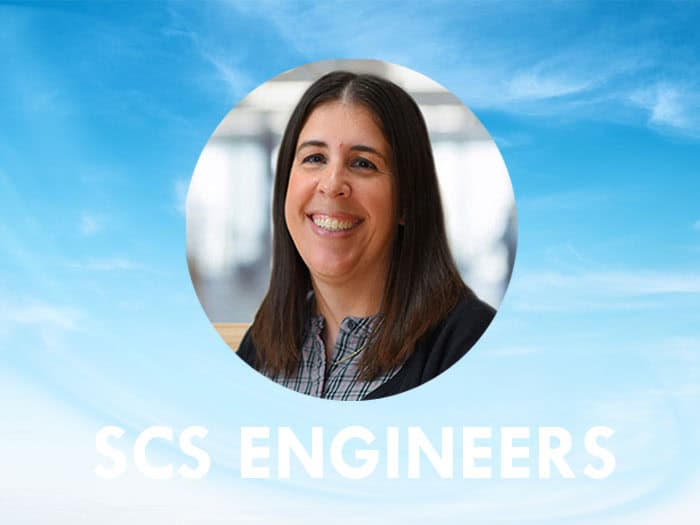
Congratulations to Gabrielle Stephens for her promotion to lead SCS’s Southwestern U.S. Air Compliance Group. She brings over two decades of client success to the role.
Greenhouse gas (GHG) reporting or verification, regulatory air compliance, and air permitting services fall within Ms. Stephens’ purview. She leads teams that support clients in the solid waste and manufacturing industries, who find value in having a regulatory liaison to navigate ever-changing federal, state, and local regulations. These teams help maintain efficient operations and enhance business communication with stakeholders.
Regulatory agencies often operate independently, and knowledgeable environmental consultants know how best to meet multiple agency data requirements, resulting in positive relationships between agencies and clients. SCS clients find that improved communication helps minimize or prevent permitting and compliance delays. Agencies, especially air district staff, can depend on the accuracy of Clean Air Act experts who are experienced with newer technologies proven to work, but potentially new in a district.
Ms. Stephens’ experience spans multiple states, numerous air districts and local enforcement agencies.
Beyond her work in air permitting and compliance, Ms. Stephens works on emissions estimates and inventories and has extensive experience preparing permit-to-construct/operate and Title V permit applications. She has also undertaken projects evaluating and reporting to meet the federal Greenhouse Gas (GHG) Rule and the AB 32 Landfill Methane Rule. Her collaborative efforts with the solid waste industry contribute to multiple facilities obtaining landfill gas-to-energy and RNG permits that positively impact air quality.
Ms. Stephens’ air compliance audits, permitting, and compliance reporting for manufacturing facilities, including fiberglass boats, product removers, ceramics, paper products, and cement/aggregates, help ensure regulatory compliance and improve operational efficiency.
Additional Clean Air Act Resources:
Join SCS Engineers September 15-17, 2025 in Fort Collins for the Colorado SWANA Fall Conference, the region’s solid waste industry event. This annual gathering brings together professionals, innovators, and thought leaders to share insights, explore solutions, and connect on the future of solid waste management.
This year, we’re excited to announce:
Featured Presentation: Melissa Russo
Melissa Russo
Session: Advancing Drone Technologies for the Solid Waste Industry: Safer, Smarter, and More Efficient Data Collection
Melissa will highlight how SCS’s Remote Monitoring and Control (RMC) team is transforming landfill operations through advanced drone technologies. With a nationwide fleet of FAA-licensed drone pilots and GIS-based data tools, SCS is delivering safer, more efficient, and smarter ways to collect and assess critical site data.
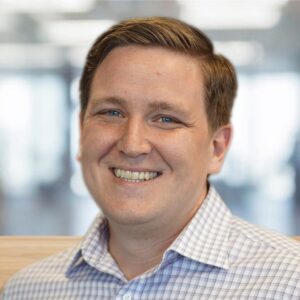 William Haley
William Haley
Session: LF Construction for Integrated Gas Systems
This presentation explores how increasing methane regulations are shaping landfill design and construction. William will discuss strategies for integrating gas collection systems into landfill cells during their development, ensuring gas capture begins as early as filling stages. The session will cover regulatory requirements, design considerations for aligning gas and leachate collection systems, and showcase real-world examples of integrated landfill/gas collection systems with demonstrated performance results.
Register now! We look forward to seeing you in Fort Collins!
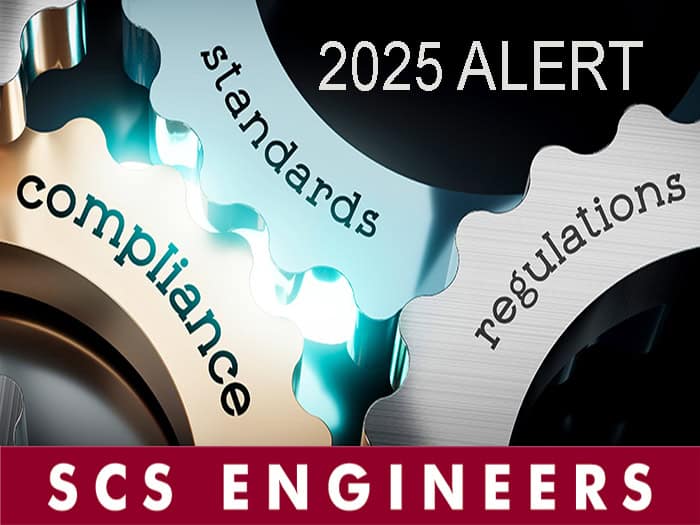
Recently, Donald Trump issued four executive orders extending Clean Air Act – NESHAP compliance deadlines for a number of specific facilities that provide medical equipment sterilization, burn coal to make electricity, manufacture certain synthetic chemicals, or mine taconite. The big headline is the EPA announcing plans to rescind the ‘endangerment finding’ that allows climate regulation. However, at the same time coal combustion residuals rules are being changed. This Regulatory Alert contains language from the four executive orders, which includes a list of the specific facilities that have been granted extensions to comply. In each order, the President finds that the technology required is not available and that it is in the interest of national security to provide the extensions.
Normally there is a notice-and-comment rulemaking under the Administrative Procedures Act to extend deadlines. If the courts allow the President to continue invoking national security we may see more such executive orders modifying regulations. Follow SCS Engineers on social media to read our SCS Technical Bulletins, which summarize regulatory proposals and changes for public and private entities.
As the regulatory landscape continues to evolve, proactive planning is critical to preserving flexibility, value, and mitigating risk. We encourage businesses to consult with environmental engineers and consultants and their legal counsel to navigate these changes for continued sustainable success.
NESHAP – EtO Rule
On April 5, 2024, the Environmental Protection Agency published a final rule, pursuant to section 112 of the Clean Air Act, 42 U.S.C. 7412, titled National Emission Standards for Hazardous Air Pollutants: Ethylene Oxide Emissions Standards for Sterilization Facilities Residual Risk and Technology Review, 89 FR 24090 (EtO Rule). The EtO Rule imposes new emissions-control requirements on commercial sterilization facilities.
Certain stationary sources subject to the EtO Rule, as identified in Annex I of this proclamation, are exempt from compliance with the EtO Rule for a period of 2 years beyond the EtO Rule’s relevant compliance dates (Exemption). This Exemption applies to all compliance deadlines established under the EtO Rule applicable to the stationary sources listed in Annex I, with each such deadline extended by 2 years from the date originally required for such deadline. The effect of this Exemption is that, during each such 2-year period, these stationary sources will remain subject to the emissions and compliance obligations in effect prior to the issuance of the EtO Rule. In support of this Exemption, I (Trump) hereby make the following determinations:
The technology to implement the EtO Rule is not available. Such technology does not exist in a commercially viable form sufficient to allow implementation of and compliance with the EtO Rule by the compliance dates set forth in the EtO Rule. It is in the national security interests of the United States to issue this Exemption for the reasons stated in paragraphs 1 and 3 of this proclamation. Link
ANNEX I
International Sterilization Laboratory
Affected Facility/Source: Groveland Facility, Florida
Becton Dickinson and Company
Affected Facility/Source:
KPR US, LLC d/b/a Kendall Patient Recovery
Affected Facility/Source: Augusta Facility, Georgia
MedXL, LLC
Affected Facility/Source: Ardmore Facility, Oklahoma
Aligned Medical Solutions
Affected Facility/Source:
Professional Contract Sterilization, Inc.
Affected Facility/Source: Taunton Facility, Massachusetts
Sterigenics U.S., LLC
Affected Facility/Source:
Cosmed Group, Inc.
Affected Facility/Source:
Arthrex
Affected Facility/Source: Ave Maria Facilities (2), Florida
Cook Incorporated
Affected Facility/Source: Ellettsville North Facility, Indiana
ALCON Research Ltd.
Affected Facility/Source: ALCON Advance Optic Device Center, North Facility, West Virginia
Affected Facility/Source: Allentown Manufacturing Facility, Pennsylvania
DeRoyal Industries, Inc.
Affected Facility/Source:
Sterilization Services of Georgia, Inc.
Affected Facility/Source: Atlanta Facility, Georgia
Sterilization Services of Virginia, Inc.
Affected Facility/Source: Richmond Facility, Virginia
Trinity Sterile, Inc.
Affected Facility/Source: Trinity Sterile, Inc., Maryland
LivaNova USA, Inc.
Affected Facility/Source: LivaNova Arvada Facility, Colorado
Covidien LP
Affected Facility/Source: Covidien North Haven Facility, Connecticut
Medtronic Xomed LLC
Affected Facility/Source: Jacksonville Facility, Florida
Medtronic Puerto Rico Operations Company, Inc.
Affected Facility/Source:
Advanced Product Solutions
Affected Facility/Source: Columbia Facility, Alabama
Affected Facility/Source: Salinas, Puerto Rico
Steri-Tech, Inc.
NESHAP – MATS Rule
On May 7, 2024, the Environmental Protection Agency published a final rule, pursuant to section 112 of the Clean Air Act, 42 U.S.C. 7412, titled National Emissions Standards for Hazardous Air Pollutants: Coal- and Oil-Fired Electric Utility Steam Generating Units Review of the Residual Risk and Technology Review, 89 FR 38508 (Rule), which amended the preexisting Mercury and Air Toxics Standards (MATS) rule to make it more stringent. The Rule’s effective date was July 8, 2024. Id. Its compliance date is July 8, 2027, 3 years after its effective date. See 89 FR 38519.
Certain stationary sources subject to the Rule, as identified in Annex I of this proclamation, are exempt from compliance with the Rule for a period of 2 years beyond the Rule’s compliance date — i.e., for the period beginning July 8, 2027, and concluding July 8, 2029 (Exemption). The effect of this Exemption is that, during this 2-year period, these stationary sources are subject to the compliance obligations that they are currently subject to under the MATS as the MATS existed prior to the Rule. In support of this Exemption, I (Trump) hereby make the following determinations:
a. The technology to implement the Rule is not available. Such technology does not exist in a commercially viable form sufficient to allow implementation of and compliance with the Rule by its compliance date of July 8, 2027.
b. It is in the national security interests of the United States to issue this Exemption for the reasons stated in paragraphs 1 and 3 of this proclamation. Link
ANNEX I
Affected Facility/Source: Cardinal Unit 1, Unit 2, and Unit 3, Ohio
Tri-State Generation and Transmission Association
Affected Facility/Source: Craig Generating Station Unit 2 and Unit 3, Colorado
City Water, Light and Power
Affected Facility/Source: Dallman Unit 4, Illinois
Cardinal Operating Company
NESHAP – HON Rule
On May 16, 2024, the Environmental Protection Agency published a final rule titled New Source Performance Standards for the Synthetic Organic Chemical Manufacturing Industry and National Emission Standards for Hazardous Air Pollutants for the Synthetic Organic Chemical Manufacturing Industry and Group I & II Polymers and Resins Industry, 89 FR 42932 (HON Rule). The HON Rule imposes new emissions-control requirements on certain chemical manufacturing facilities, some of which were promulgated pursuant to section 112 of the Clean Air Act, 42 U.S.C. 7412.
Certain stationary sources subject to the HON Rule, as identified in Annex I of this proclamation, are exempt from compliance with those aspects of the HON Rule that were promulgated under section 112 of the Clean Air Act, 42 U.S.C. 7412 for a period of 2 years beyond the HON Rule’s relevant compliance dates (Exemption). This Exemption applies to all compliance deadlines established under the HON Rule applicable to the stationary sources listed in Annex I, with each such deadline extended by 2 years from the date originally required for such deadline. The effect of this Exemption is that, during each such 2-year period, these stationary sources will be subject to the emissions and compliance obligations that they are currently subject to under the applicable standard as that standard existed prior to the HON Rule. In support of this Exemption, I (Trump) hereby make the following determinations:
a. The technology to implement the HON Rule is not available. Such technology does not exist in a commercially viable form sufficient to allow implementation of and compliance with the HON Rule by the compliance dates in the HON Rule.
b. It is in the national security interests of the United States to issue this Exemption for the reasons stated in paragraphs 1 and 3 of this proclamation. Link
ANNEX I
NESHAP – Taconite Rule
On March 6, 2024, the Environmental Protection Agency published a final rule, pursuant to section 112 of the Clean Air Act, 42 U.S.C. 7412, titled National Emission Standards for Hazardous Air Pollutants: Taconite Iron Ore Processing, 89 FR 16408 (Taconite Rule). The Taconite Rule imposes new emissions-control requirements on taconite iron ore processing facilities.
Certain stationary sources subject to the Taconite Rule, as identified in Annex I of this proclamation, are exempt from compliance with the Taconite Rule for a period of 2 years beyond the Taconite Rule’s relevant compliance dates (Exemption).The technology to implement the Taconite Rule is not currently available, and it is necessary to issue this Exemption now because long design, permitting, and construction lead times mean that regulated entities will not be able to meet the relevant compliance deadlines absent compliance relief. This Exemption applies to all compliance deadlines established under the Taconite Rule, with each such deadline extended by 2 years from the date originally required for such deadline. The effect of this Exemption is that, during each such 2-year period, these stationary sources are subject to the emissions and compliance obligations that they are currently subject to under the applicable standard as that standard existed prior to the Taconite Rule. In support of this Exemption, I (Trump) hereby make the following determinations:
a. The technology to implement the Taconite Rule is not available. Such technology does not exist in a commercially viable form sufficient to allow implementation of and compliance with the Taconite Rule by the compliance dates in the Taconite Rule.
b. It is in the national security interests of the United States to issue this Exemption for the reasons stated in paragraphs 1 and 3 of this proclamation. Link
ANNEX I
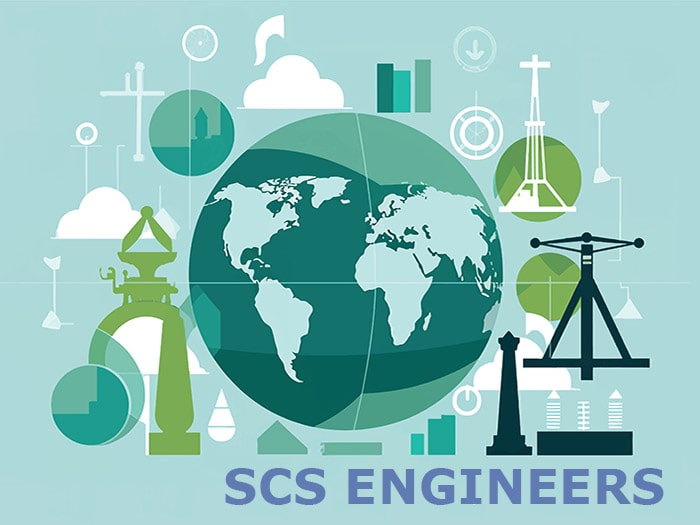
On April 17, 2025, the U.S. Environmental Protection Agency (EPA) announced it will extend the compliance deadlines for coal combustion residual (CCR) management unit (CCRMU) requirements. This action will allow facilities to submit both sections of the Facility Evaluation Report simultaneously, provided that both reports are turned in no later than February 8, 2027.
EPA is also extending the groundwater monitoring requirements for owners or operators of coal combustion residual management units until August 8, 2029. Because the Facility Evaluation Report and groundwater monitoring requirements are necessary for compliance with other CCRMU requirements, EPA is aligning these remaining CCRMU compliance deadlines.
EPA has proposed to approve North Dakota’s CCR program application, which would allow the state to manage coal ash disposal in surface impoundments and landfills. EPA is also working with Wyoming and other states as they seek to manage their CCR programs without federal oversight.
EPA is accepting comments for 30 days after publication in the Federal Register. Unless EPA receives adverse comments, this final rule will be effective six months after publication in the Federal Register.
Additional Resources:
The U.S. meat and poultry industry generates slaughterhouse waste (SHW) as a by-product, which is converted into additional products through the rendering process to minimize waste. Although rendering generates sellable commodities, Anaerobic Digestion (AD) is a proven, scalable technology for offsetting energy-intensive processes and minimizing FOG and contaminants in wastewater. AD can provide new opportunities for onsite waste management paired with renewable energy production and biogas potential for thermal energy, electricity generation, and renewable natural gas (RNG) to offset operating costs.
The EPA’s proposed Effluent Limitations Guidelines (ELGs) will require that facilities add biological treatment, creating a new waste stream (waste biosolids) that could be managed along with other slaughterhouse wastes via anaerobic digestion.
SCS Engineers presents a free educational forum explaining the opportunities for the meat and poultry industry and how to determine if AD is feasible to help your operation reduce energy costs with biogas production and enable nutrient recovery while reducing wastewater contamination. We’ll cover:
 Meet Dr. Erik Anderson, a senior SCS Liquid Management team member and a National Expert in AD. He has 15 years of experience in process design related to biomass engineering, specifically anaerobic digestion and other waste-to-energy systems. His work includes modeling biomass technologies for performance, cost, and economic evaluation or life-cycle analysis, combining material testing and/or pilot-scale testing for more value.
Meet Dr. Erik Anderson, a senior SCS Liquid Management team member and a National Expert in AD. He has 15 years of experience in process design related to biomass engineering, specifically anaerobic digestion and other waste-to-energy systems. His work includes modeling biomass technologies for performance, cost, and economic evaluation or life-cycle analysis, combining material testing and/or pilot-scale testing for more value.
Additional ELG Resources:
Join SCS Engineers on Tuesday, August 5, 2025, at 2:00 PM EDT for Odor Control Plans That Work: Essential Strategies for Cannabis Growers, Processors, Merchants & Regulators webinar. Cannabis-related odor complaints are on the rise, often leading to regulatory challenges and strained community relations. This webinar explores proactive, science-based strategies to help cannabis operators and regulators manage odor effectively—before it becomes a problem. Learn how odor control planning, including Dilution-to-Threshold (D/T) testing and certified abatement plans, can protect your business, improve compliance, and build trust with the community.
What You’ll Learn:
Who Should Attend:
Meet the Experts:
 Christopher Petro, MSCE, EIT – Project Manager and Odor Lab Lead at SCS Engineers, specializing in air quality, odor audits, and abatement plans
Christopher Petro, MSCE, EIT – Project Manager and Odor Lab Lead at SCS Engineers, specializing in air quality, odor audits, and abatement plans
 Paul Schafer, CIEC, VETC – Vice President and National Expert in ambient air monitoring and odor impact assessments at SCS Engineers
Paul Schafer, CIEC, VETC – Vice President and National Expert in ambient air monitoring and odor impact assessments at SCS Engineers
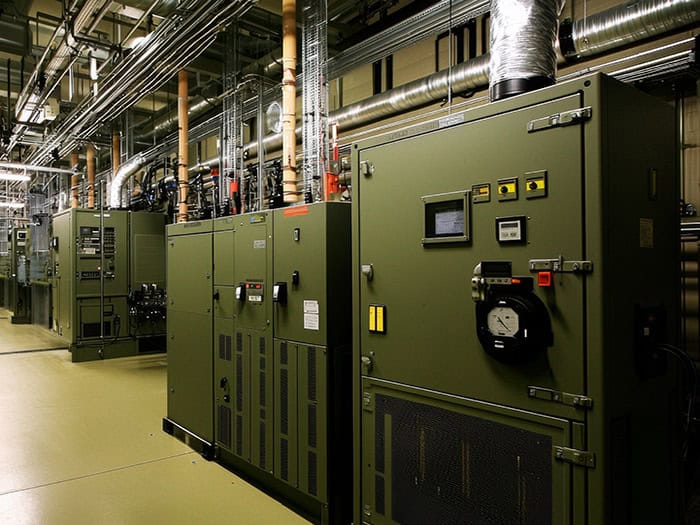
Amendment to existing Virginia regulations regarding the use of emergency power generators (EPGs) at certain military installations; 9VAC5-80-1111 of 9VAC5-80; 9VAC5-540-40 of 9VAC5-54
The Virginia Department of Environmental Quality (DEQ) recently approved amendments to the Emergency Power Generator (EPG) regulations that apply to certain military installations. The amendments will provide greater flexibility with respect to the operation of mission-critical EPGs at Department of Defense (DoD) facilities for non-emergency purposes, including up to 50 hours per year for planned outages, switch gear, and related electrical system testing.
The amendment should not have an impact on EPG permitting. Nonetheless, we suspect the amendment may interest EPG operators at DoD facilities in Virginia.
Implementation of the amendments is consistent with the U.S. Environmental Protection Agency’s National Emissions Standards for Hazardous Air Pollutants for Stationary Reciprocating Internal Combustion Engines pursuant to 40 CFR Part 63 Subpart ZZZZ and New Source Performance Standards pursuant to 40 CFR Part 60 Subparts IIII and JJJJ.
As noted in 9 VAC 5-80-1111, DoD facilities that desire to take advantage of the increased operational flexibility must first certify their EPGs per 9VAC5-20-230.
The amended regulation published in the Virginia Register on July 14, 2025. Additional details, including the revised regulation (track changes employed to highlight amendments), are available at: https://townhall.virginia.gov/l/ViewStage.cfm?StageID=10796
If you have a question pertaining to the amendments, please contact SCS Engineers.

The upcoming round of EPA Brownfields MARC Grant applications is your community’s final opportunity to benefit from expanded funding through the Bipartisan Infrastructure Law (BIL). With this expanded support ending, competition is expected to be intense, and future grants could be smaller and scarcer.
Don’t miss this critical moment to secure transformative resources for revitalization and economic growth. Start preparing your application now to stand out and make an impact.
EPA anticipates issuing the following solicitations for funding in fall 2025:
• FY 2026 Multipurpose Grants
• FY 2026 Assessment Grants
• FY 2026 Cleanup Grants
The strongest applications don’t come together overnight. They are forged through strategic planning and expert insight, months in advance.
From SAM.gov registration and securing your Unique Entity ID to assembling community partnerships and preparing technical documents, early planning is key! Partner with the experts at SCS Engineers to turn your vision into a compelling, fundable reality.
Let’s lay the groundwork today, so you’re ready when it counts. Reach out to SCS Engineers to start building your competitive, on-time application. After you contact us, one of our grant experts will reach out to schedule a virtual meeting.
Why SCS?
At SCS Engineers, we guide our clients through every step of the process, helping you confirm eligibility, craft a compelling story, and compile the documentation that makes your application stand out. Our team has a strong track record of securing Brownfields funding for communities across the country. When you work with us, you’re not just meeting deadlines, you’re increasing your chances of success.
About SCS Engineers
SCS Engineers is an award winning environmental engineering, consulting and construction firm that designs and implements sustainable environmental solutions. SCS is a full-service provider. We study challenges and design solutions; we remediate, build and operate environmental and energy projects and systems; and we monitor a wide range of environmental control systems. Our core capabilities include environmental due diligence, site remediation, and regulatory compliance for air, water, and soil.